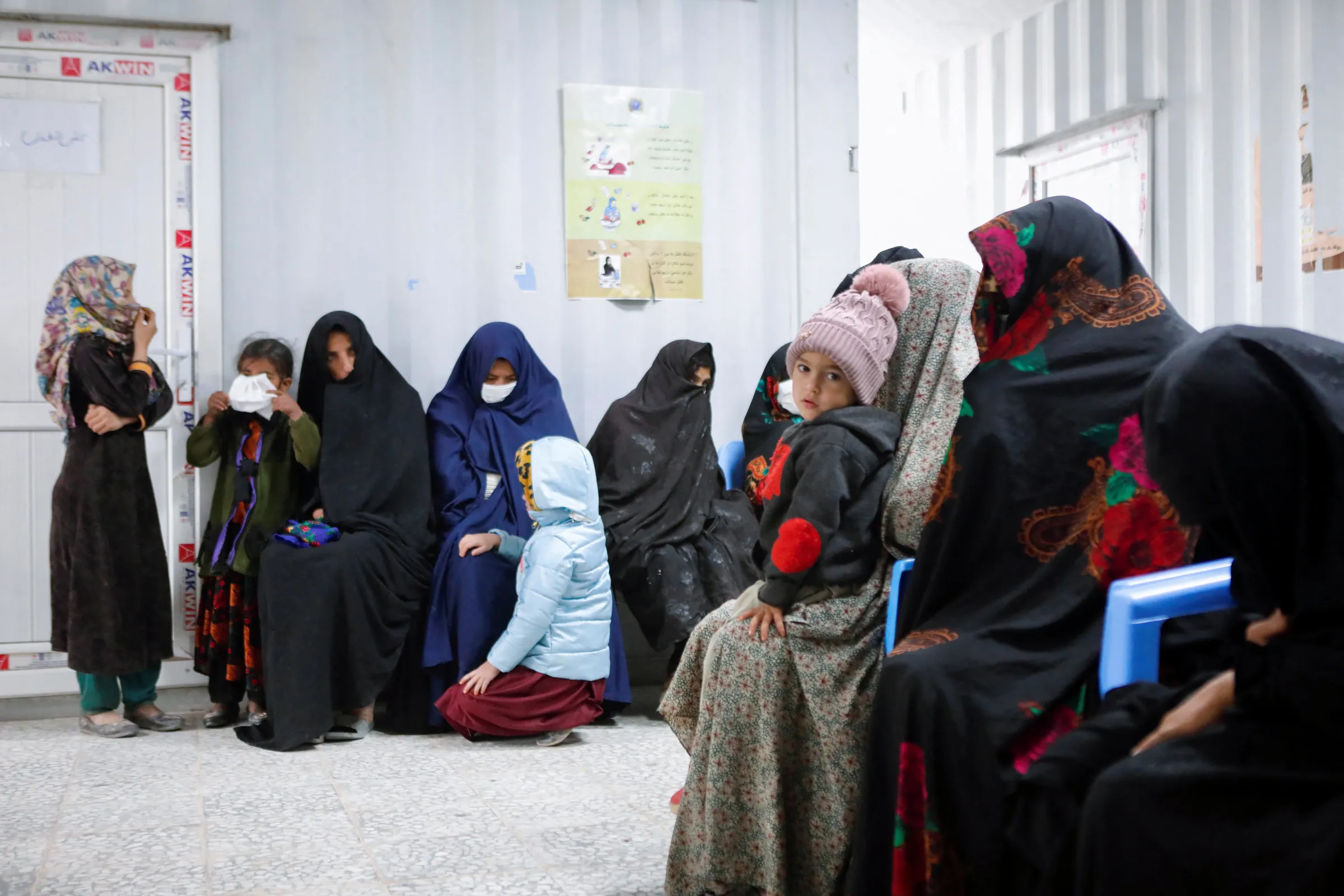Q&A: Women and girls pay the price for savage aid cuts - UN

Afghan women and children wait for their turn to see a doctor at Yaka Dokan health clinic run by nonprofit organization World Vision, in Yaka Dokan village, Herat, Afghanistan, October 23, 2024. REUTERS/Sayed Hassib
What’s the context?
From Sudan to Ukraine, key services for women and girls face closure or major disruption.
- Global aid cuts hit services for women and girls
- Half of women's aid charities face closure in months
- 'Detrimental' long-term impacts, says UN Women
LONDON - Half of all charities that help women and girls risk folding this year due to savage aid cuts that could sever sexual health services, close schools and abandon the very poorest of the poor, the United Nations said last week.
International aid fell in 2024 for the first time in six years, and is set to plunge further this year after U.S. President Donald Trump imposed a sweeping freeze on foreign aid, and many other key donors announced cuts.
In a report published last week, UN Women said funding cuts had affected 90% of the 411 global women-led and women's rights groups it had surveyed - with half projected to close within six months absent a fresh injection of cash.
In a microcosm of the gloomy global picture, UN Women said the suspension of U.S. aid had already affected more than $40 million of its own funding.
Context spoke to UN Women's Sofia Calltorp, chief of humanitarian action, to find out about the cuts' fallout.
What were the main findings of the UN Women report?
We thought that there were going to be severe implications (of the cuts) but we were really alarmed when we saw that almost half of those organisations risk closing down within six months.
That was quite striking to see how many of those organisations were not only pushed to breaking point, but many of them that have already started to shut down services in terms of gender-based violence, support, protection, livelihoods.
What impact does that have on women and girls?
Women will not be able to access health services. It means that children will be out of school. It means that access to water, to food, to shelter will be diminished for some of the most marginalised, most vulnerable people on earth.
I was just in Sudan a few weeks back and ... there is so little protection and assistance out there already. Many of these women-led organisations are really at the brink. They are already so hard hit by conflicts and violence.
In Afghanistan, more than half of women's organisations say that programmes for women are directly affected. This includes the closure of health facilities, forcing girls and women - many of them pregnant - to walk for hours just to access basic care.
In Ukraine, over 70 percent of women's organisations report major disruptions. Many have already suspended shelters, legal aid, and trauma support for survivors.
What about the longer-term effects?
Everyone talks about localisation and the importance of empowering local actors... but those very local organisations that the (humanitarian) system depend on in the long run, they are the very ones that are the hardest hit.
Looking ahead, international assistance will be relying more and more on local organisations and community-led responses - but who will be there?
What more needs to be done to address this?
The resilience among those organisations is incredible. Many of them are now adapting, looking into new funding, new ways of sustaining themselves.
Women organisations are the frontline responders, they are just so crucial to each and every aspect of humanitarian response. If you let them down now, then in the long run that will have detrimental effects for us now and in the future.
This interview has been edited for length and clarity.
(Reporting by Lin Taylor; Editing by Lyndsay Griffiths.)
Context is powered by the Thomson Reuters Foundation Newsroom.
Our Standards: Thomson Reuters Trust Principles
Tags
- Gender equity
- Government aid

















